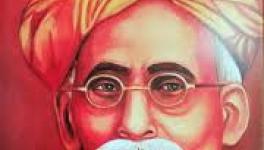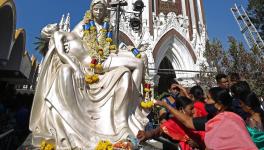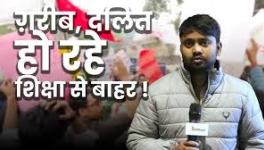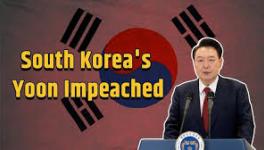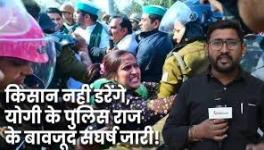Should We Talk to the "Stone Throwers" in the Valley?
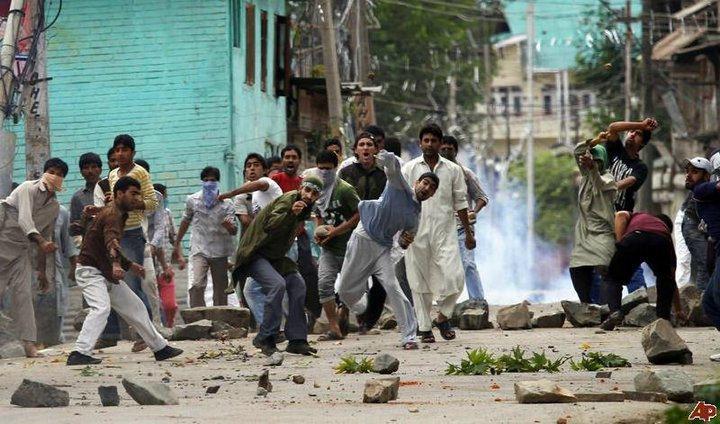
Should we talk to the “Stone throwers” in the Valley? Are they terrorists? Are they “Stake holders” in the Valley peace or “Separatists” or Pakistan “proxies”?
For the ruling BJP government there is no difference between the “Stone throwers” and cross border terrorists. The Modi government thus told the Supreme Court on April 28 that they have no intention of holding peace talks with “Separatists”. The next day BJP General Secretary Ram Madhav affirmed that “Separatists” were using Valley people as “guinea pigs”, hence no “question of talks with them”.
On the other hand several retired army generals have suggested that the government should talk to the “Stone throwers” instead of leaving things to the security agencies. This was advocated even by a serving general.
On August 19, 2016 Lt.Gen.D.S.Hooda, then Northern Army Commander, recommended that everybody who “is involved including separatists should sit down, put our heads together”. Since the BJP leadership did not react, it was left to a senior BJP leader outside the government to take some initiative. Former minister Yashwant Sinha representing the “Committee of Concerned Citizens” said: “A multi-dimensional dialogue for settling the Kashmir issue be started between India and Kashmiri leaders and between India and Pakistan.”
Pushed to a corner, Jammu and Kashmir Chief Minister Mehbooba Mufti announced on April 24 that the PM appeared “amenable” to holding talks with “stakeholders” if the situation became normal in the Valley. She hoped that in the next two or three months things would improve to create an atmosphere for starting a dialogue. She also suggested that the thread should be picked up from where former Prime Minister Atal Bihari Vajpayee had left off, which a New Delhi based pro-BJP daily interpreted as “an apparent suggestion for talks with separatists”. However Wajahat Habibullah, veteran Kashmir expert, who was also part of the “Committee of Concerned Citizens”, felt that talks should be held now “to bring things to normal”. He asked: “If the things are normal, what will the talks be for?”
Unfortunately there is a section even among our non-political intelligentsia who feel that no talks should be held with the protesting Valley youth who, according to them are pampered and addicted to the Central government’s largesse without being loyal. This impression has grown stronger after the landmark success of the present BJP leadership in the 2014 elections and their avowed “muscular” policy towards terrorism and Pakistan. They want to adapt the “strong arm strategy” of the Israeli government of ignoring the Palestinians since 2001.
There are three stages for conflict resolution within a country: The first stage is to decide whether a particular conflict is detrimental to national security or internal cohesion. If it is not, the law and order authorities could be asked to tackle the situation firmly. If the conflict undermines our national security and domestic integrity, a beginning has to be made to agree on confidence building measures (CBMs) to prepare the ground for talks.
A Swiss manual on CBMs says: “Through CBMs mediators try to ‘humanize’ the conflict parties and to break down the image of an impeccable villain…and to help building a working trust...” This is what the BJP government has done with the Nagas but is refusing to do with Kashmiris despite it being a border state.
The third stage is to address the root causes. As in the case of the Israel-Palestinian relationship, such deep rooted conflicts might not even reach the third stage but the peace dividend gained during the second stage by stoppage of violence would greatly contribute to national security and productivity.
A study of the history of Israel-Palestinian conflict would indicate that sagacious leadership before 2000 had given the country long spells of peace by following this path. On September 10, 1993 Israeli Prime Minister Yitzhak Rabin signed the "Declaration of Principles" with PLO Chairman Yasser Arafat on mutual recognition. Rabin was the hero of the 1967 Six Day War during the course of which he had annexed the old Jerusalem city. As Prime Minister he had overseen the legendary 1976 Entebbe rescue.
The 1993 agreement was a path breaking gesture towards regional peace by a towering Israeli leader who was at the pinnacle of his glory. It was not a sign of weakness. But Rabin was assassinated on November 4, 1995 by Yigal Amir, a right wing extremist who did not want peace with Palestinians.
Despite this assassination, Rabin’s peace policy was more or less followed by Labour Prime Ministers Shimon Peres and Ehud Barak till 2001 although in between the Rightist Likud PM Netanyahu (1996-1999) tried to dilute it. Although the 2000 Camp David Summit brokered by President Clinton between Ehud Barak and Yasser Arafat had failed, the peace atmospherics produced by the talks saw a sharp drop in terrorist violence in Israel.
However Israeli politics took a sharp turn to mayhem and disorder on September 28, 2000 when Ariel Sharon deliberately paraded his followers on the Haram al-Sharif, to provoke Palestinians to commit violence. Sharon was notorious for the 1953 Qibya massacre (1953) and the Sabra and Shatilla refugee camp killings (1982). His idea was to garner the Rightist votes and snatch Likud leadership from Netanyahu in the March 2001 elections. It was pure electoral politics of deliberately spurring violence. The Second Intifada (Uprising) which started on that day and which continued till February 8, 2005 greatly helped Sharon to consolidate his hard-line Israeli following.
That was t
he period when the Right Wing in Israel started branding all Palestinian protestors as “terrorists”. An analysis of the violence from September 13, 1993 till September 2000(When Sharon provoked violence) would indicate that only 96 incidents had occurred during these 7 years involving 269 Israeli deaths. However after the Sharon provocation on September 28, 2000 things went out of control. 1,434 Israelis were killed and nearly 10,000 wounded between September 2000 and April 2017, according to the statistics provided by their government and Jewish Virtual Library. This will appear to be a steep price they are paying for the “No-Negotiation” policy considering that the present population of Israel is only 86 lakhs.
Did this policy make Israel stronger? Far from it. The 2011 “Gilad Shalit” exchange of freeing 1,027 Hamas prisoners for a lone Israeli soldier held in captivity by Hamas since 2006 exposed this hollow claim. Prime Minister Benjamin Netanyahu had to agree to this although he had advocated no talks with terrorists in a book edited by him in 1986 to commemorate the 10th anniversary of the Jonathan Institute, a research organization founded in memory of his elder brother Jonathan Netanyahu, the only Israeli military casualty in the Entebbe operation. Ronen Bergman in the New York Times (Nov 9, 2011) explained that the PM was forced to agree since the intelligence community could not locate Shalit: “The inability of Israeli intelligence to discover Shalit’s place of captivity in a small space that is an hour’s drive from Tel Aviv was a profound failure, one to which the departing heads of Israel’s three security organizations — Mossad, Shin Bet and the military — all admitted when they retired this year”.
All these would indicate that blindly following the Israeli strategy as our counter-terrorist tactics would be totally inadvisable.
Our own statistics on terrorist killings in Jammu & Kashmir would indicate that the deaths in 2016 rose alarmingly to 267 from 174 in 2015. Also 88 security personnel were killed in 2016 against 41 in 2015. This year we have already lost 12 security personnel not taking into account the Kupwara army base attack on April 28. This incident provoked some well informed former army officers to complain that we have no “Kashmir Policy”. They even doubted whether we have any coherent Pakistan policy at all.
One of the much advertised decisions by the Union Home Ministry after the Kupwara attack was to raise a women’s’ battalion to tackle the girl students who were seen throwing stones. A cheaper way will be to talk to them. Also the raising and training a women’s battalion would take minimum of one year. What do we do till then?
Like the Israeli Right wing, some fringe BJP ideologues term all Kashmir protestors as terrorists or Pakistani agents. This myopic view is neither true nor sensible. A contented population in a border state is the first bulwark against external subversion.
Veteran Kashmiri writer, the late Balraj Puri had said that the “spectacular success of the Indian army in the Valley (in 1947) was…due to the active co-operation of the people and the cooperation of the organized cadre of the National Conference”. Does that exist now?
(Vappala Balachandran is a senior Indian national security intelligence specialist and a former Indian police officer who has had a long innings in Maharashtra followed by two decades in the external intelligence service. He is a columnist and author)
Get the latest reports & analysis with people's perspective on Protests, movements & deep analytical videos, discussions of the current affairs in your Telegram app. Subscribe to NewsClick's Telegram channel & get Real-Time updates on stories, as they get published on our website.









